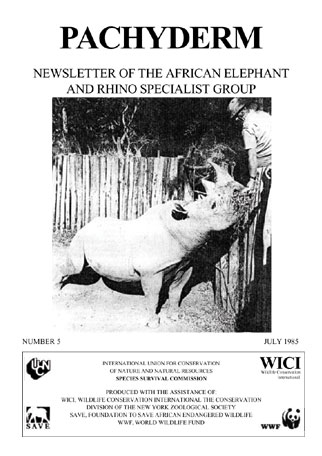Malawi's ivory carving industry
Abstract
Reviews Malawi's ivory carving industry which began the 1920's but is based on an long history of trading in the raw product. Both trade and the industry itself increased until the late 1960's and early 1970's when the Office of Forestry and Game took over the trading in ivory. Registered ivory trophy dealers established themselves around the major cities of Lilongwe and Blantyre. The Department of National Park and Wildlife tended to protect the smaller ivory dealers from the richer, larger ones. Ivory carvers did not recieve a salary but were paid for their products. Over the past decade there has been significant movement of ivory into Malawi from the neighbouring countries. Apart from being a means livelihood for many Malawians, ivory carving earns the government a substantial amount of hard currency. The paper gives an estimate of the national elephant population as approximately 2350 located in nine areas, which for the most part are designated parks or reserves including Kasungu, Liwonde, Nyika NPs and Majete, Nkhotakota, and Vwaza Marsh GRs..
Downloads
Published
How to Cite
Issue
Section
License
Copyright (c) 1985 Esmond Bradley Martin

This work is licensed under a Creative Commons Attribution-NonCommercial 4.0 International License.




